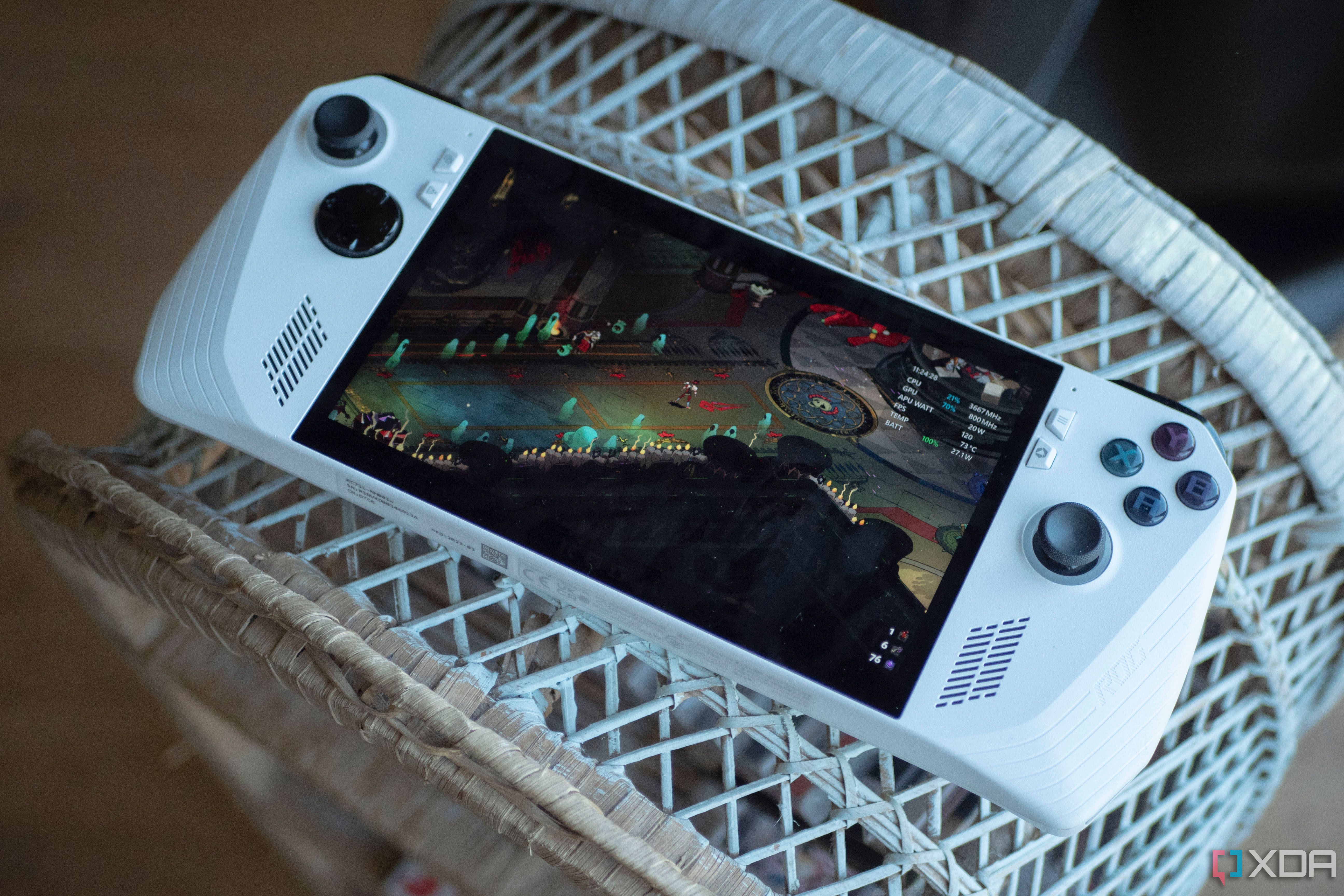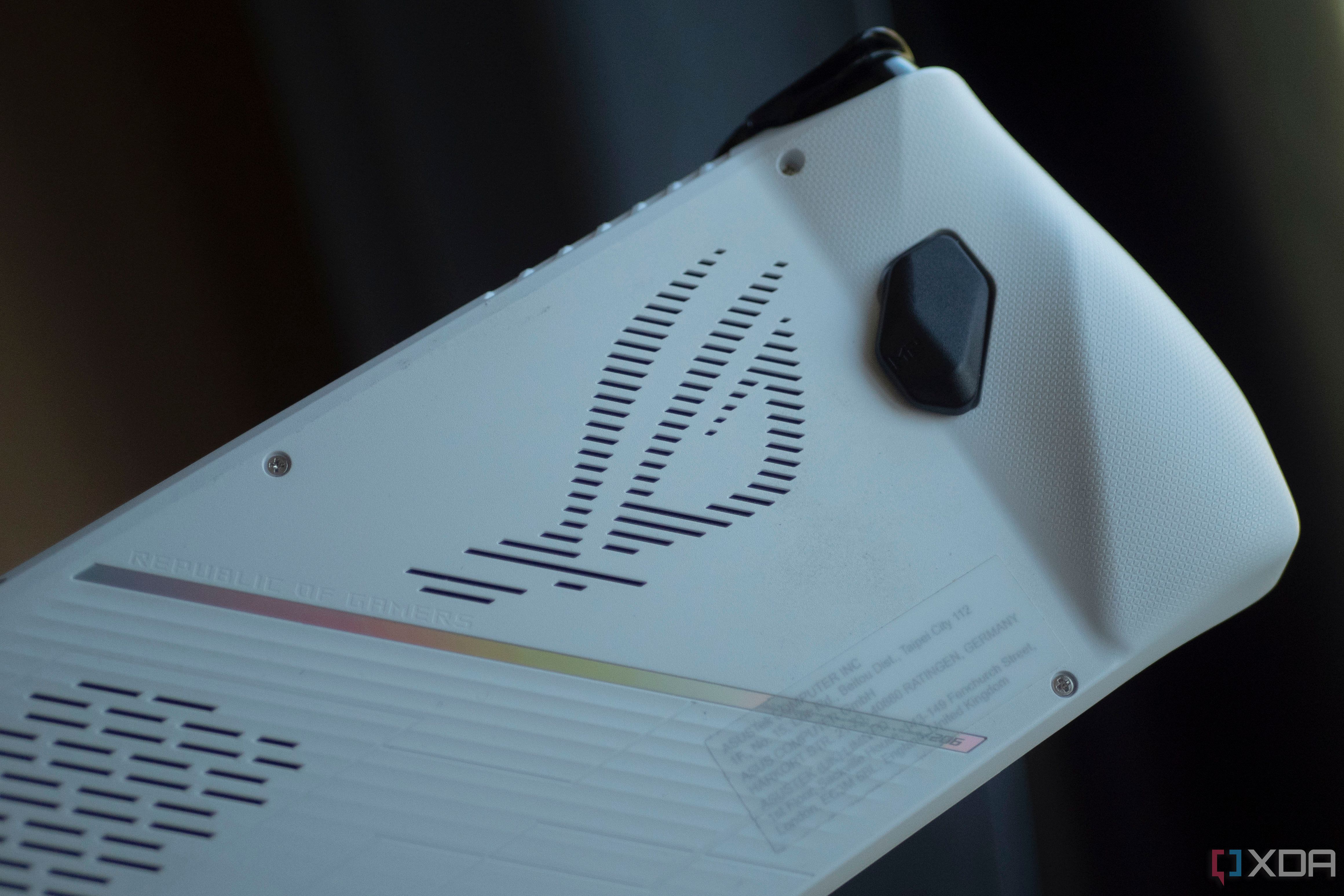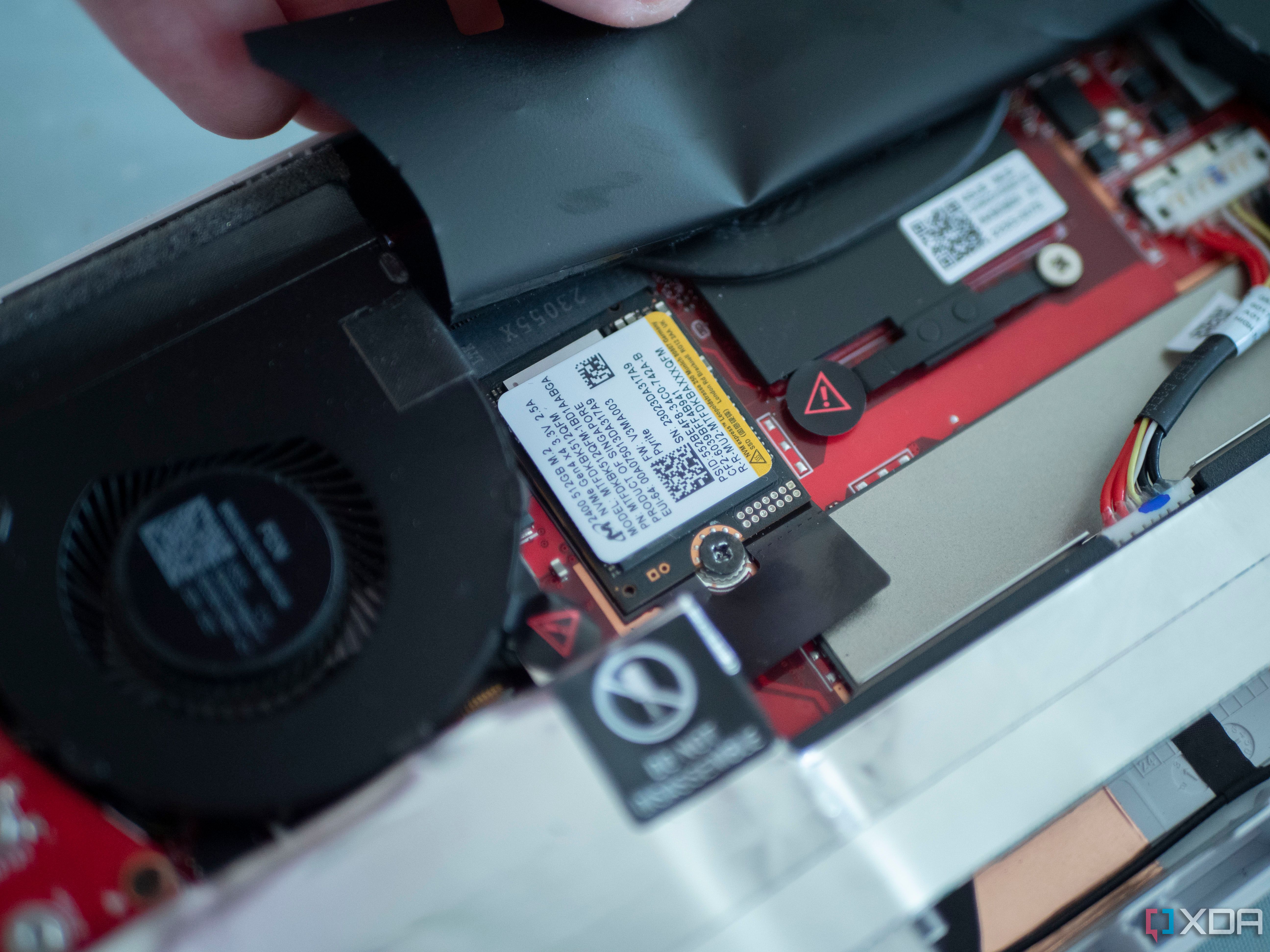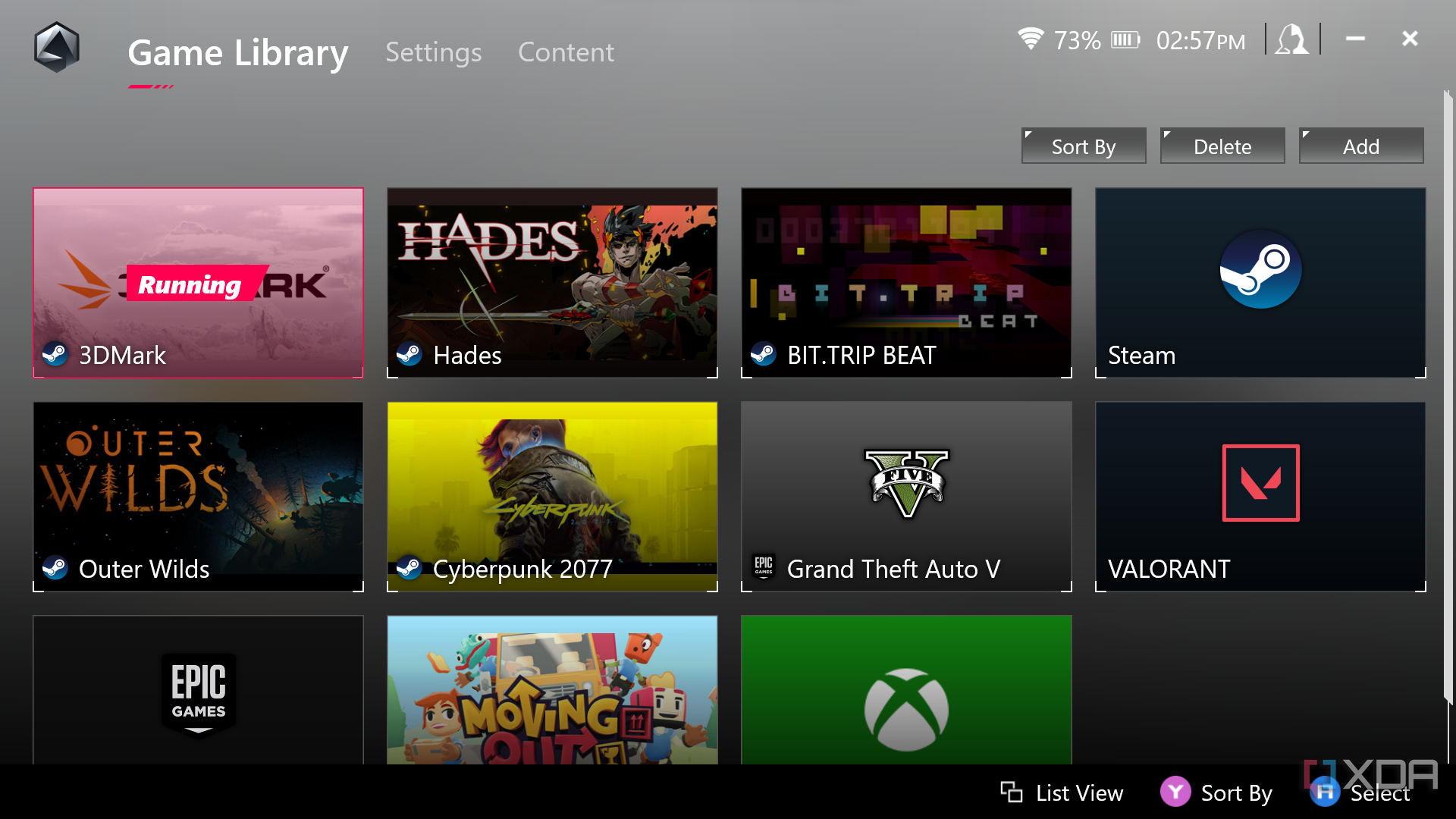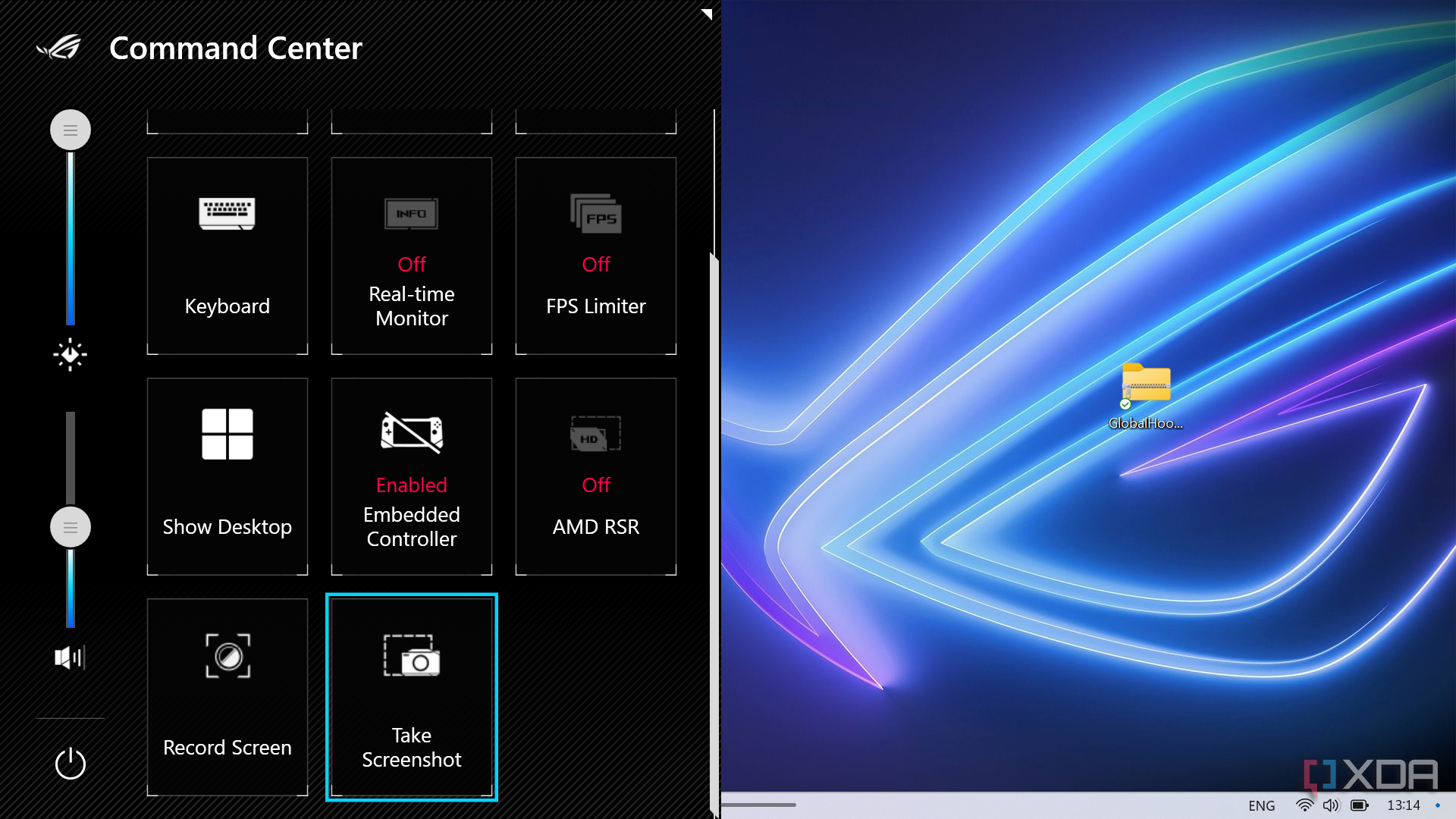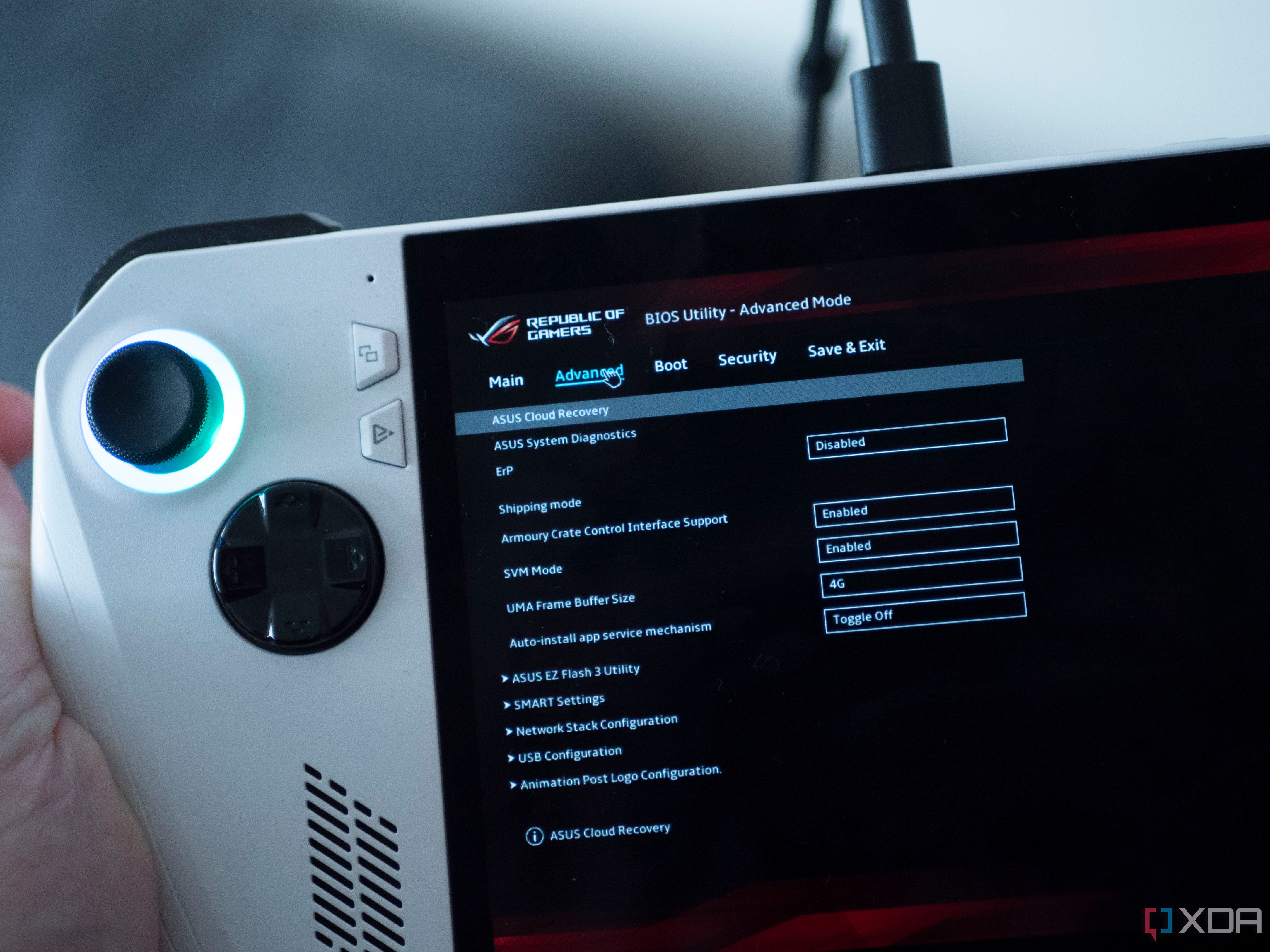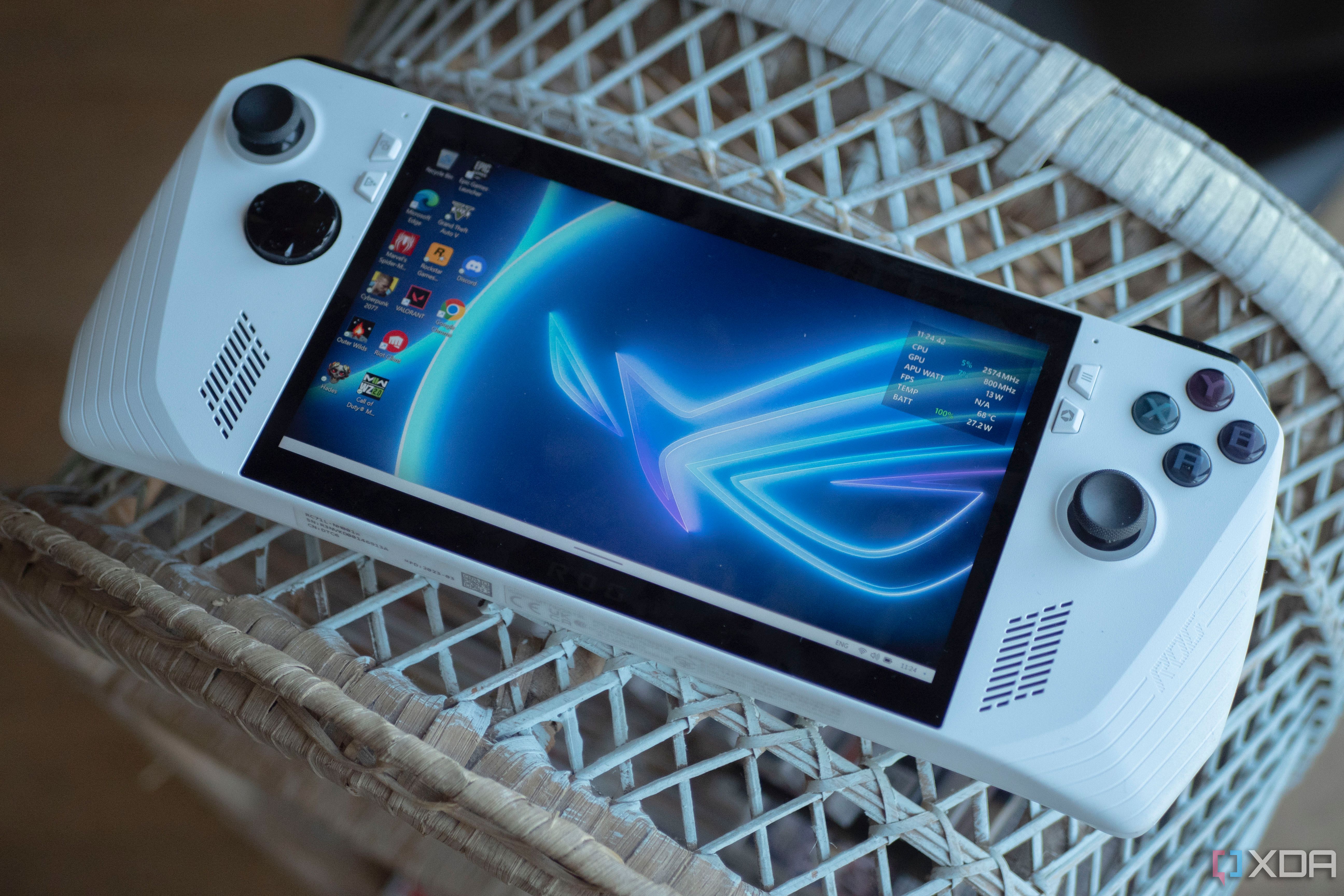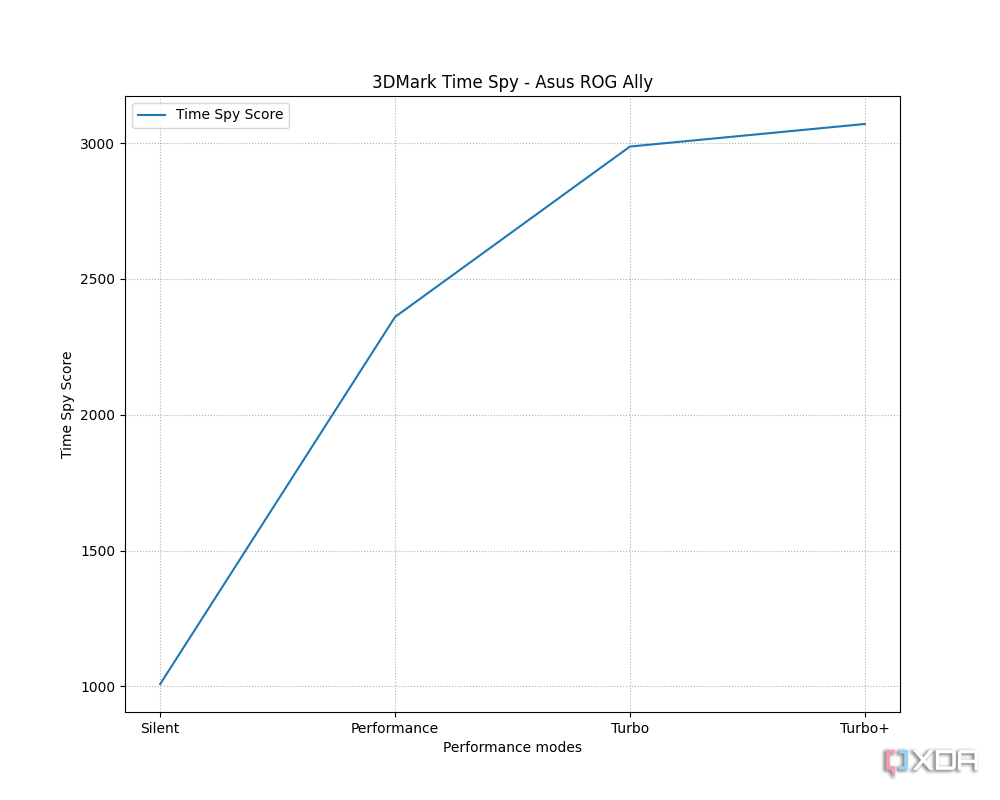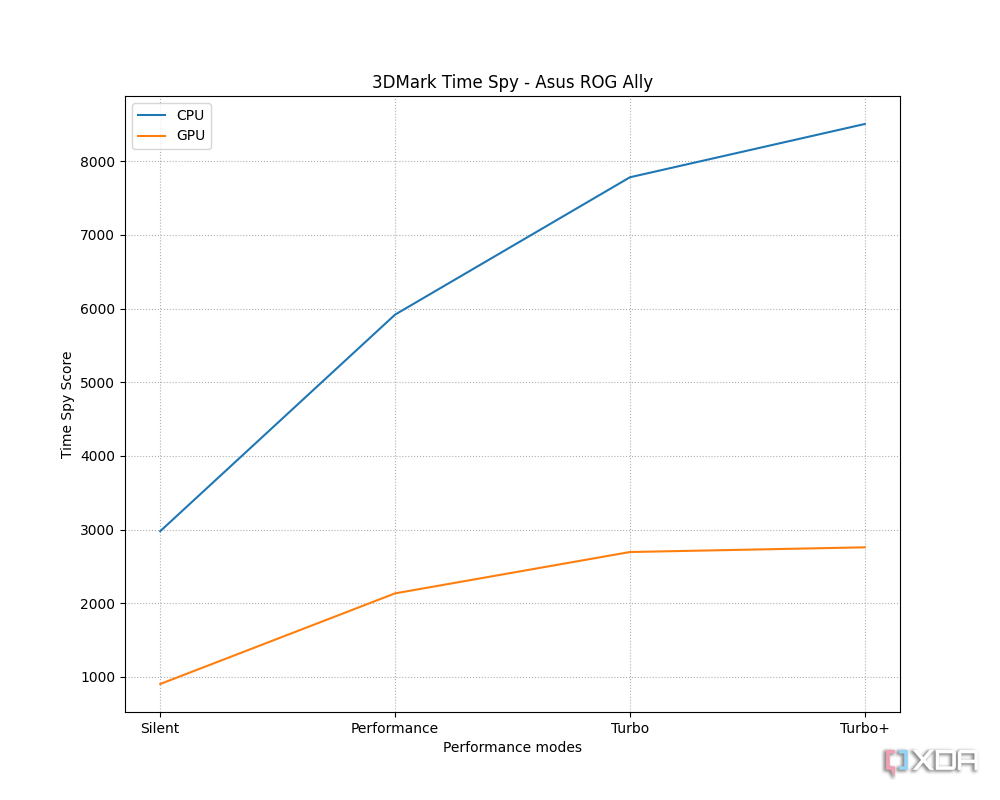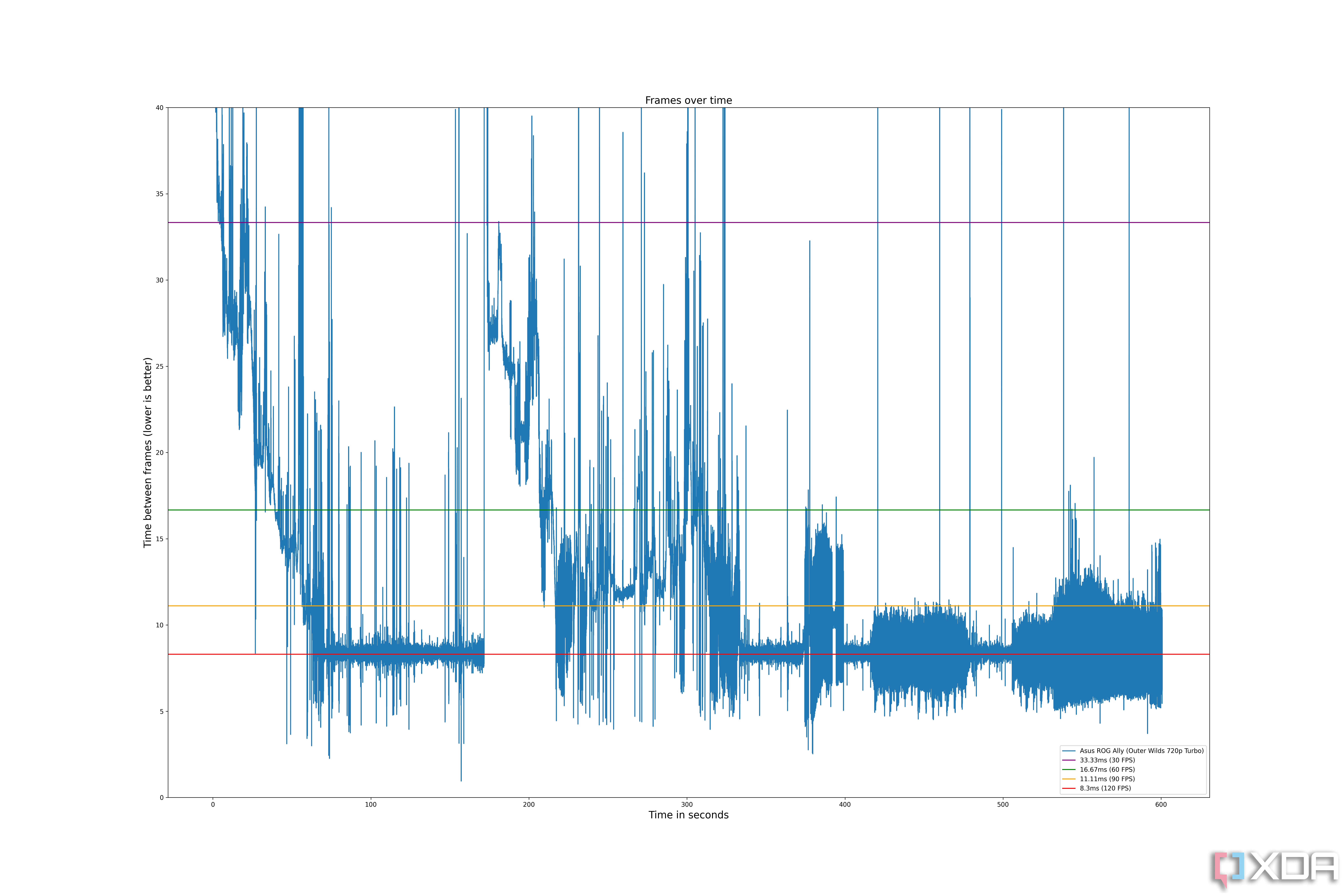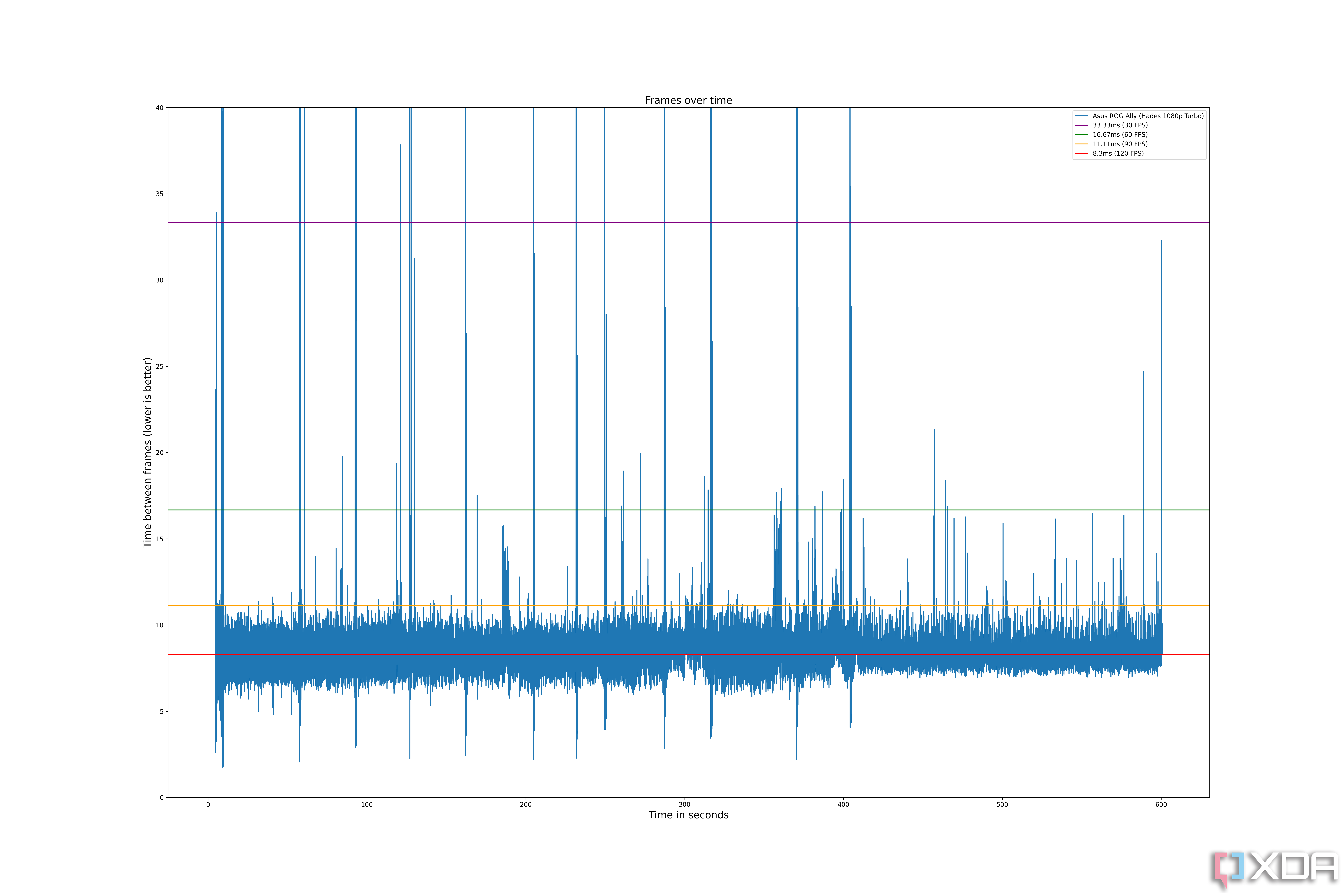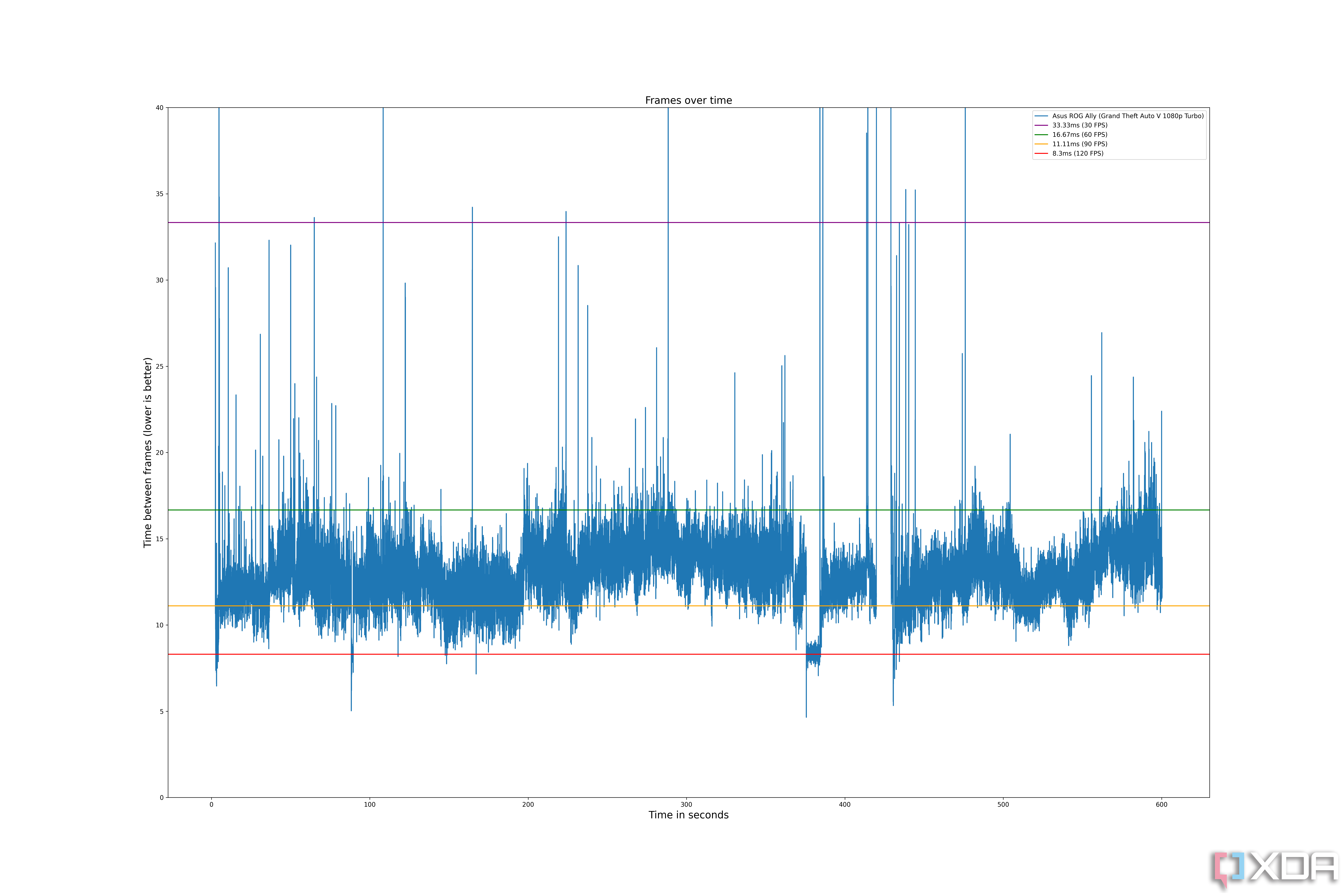Read update
- New unit, fewer problems
Quick Links
UPDATE: 2023/09/20 BY ADAM CONWAY
New unit, fewer problems
This review was initially published on July 8th, 2023, with an older unit used for testing that had numerous hardware problems and a BIOS version that was known to reduce performance. Since then, we received a new unit and Asus released a new BIOS version that solves a lot of those problems. We noted performance improvements and have seen a notable decline in reports of hardware issues since the original publishing of this review. Therefore, we have now revisited the device and our new review is below. We have also increased the score to reflect this change in circumstances, with the device scoring a 7.5 out of 10, where originally it was a 6.5.
Portable gaming handhelds are really starting to take off following the advent of the Steam Deck, and one of the most hyped introductions so far has been the Asus ROG Ally. It has a few differences from the Steam Deck that make it an exciting prospect for those who want a more powerful alternative, with a Ryzen Z1 processor, a 120Hz IPS 1080p display, and native Windows support.
However, while it is most certainly an upgrade in terms of performance, it's not as simple as saying that the Asus ROG Ally is a better device. There are a number of caveats that make it a worse selection for a lot of users, and nearly all of them come down to the fact that Windows is simply not good enough in this form factor. On top of that, given our own experience and anecdotes from users on Reddit, it would seem that Asus' quality control may not be up to par just yet.
Since receiving a new unit from Asus, we have been able to re-test the device on a newer software version as well.
About this review: I received the Asus ROG Ally Z1 Extreme from Asus UK on June 1, 2023. While the company provided us with this review unit, it did not have any input into the contents of this review. We have since returned our unit due to hardware problems and received a new device with those problems fixed.
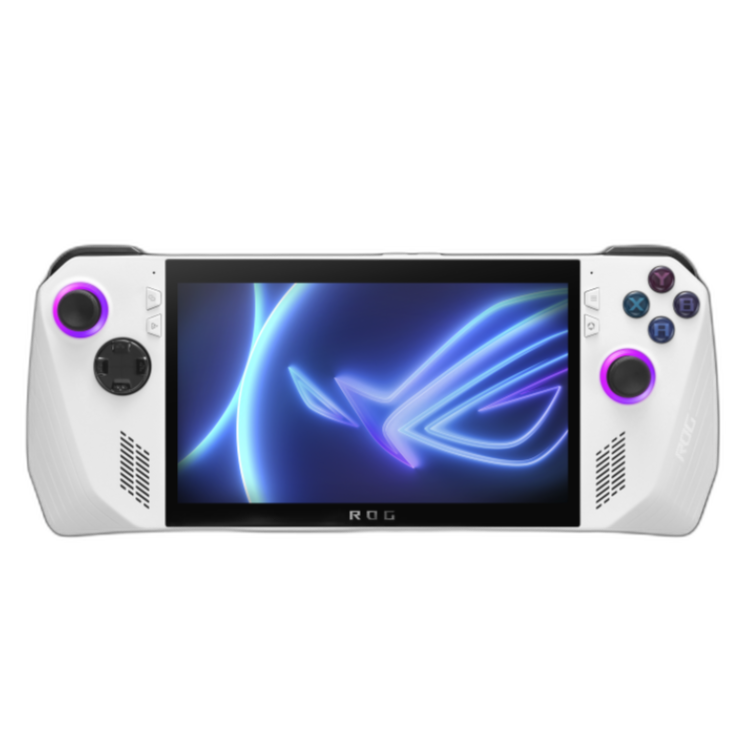
ASUS ROG Ally
The Asus ROG Ally is a handheld gaming PC that's seeking to be a major rival to Valve's Steam Deck. It runs on Windows and comes with AMD Ryzen Z1 processors. It also has a sharp Full HD display and a 120Hz refresh rate.
- Dimensions
- 11.02 x 4.37 x 0.83-1.28 inches (280 x 111 x 21.2-32.4mm)
- Brand
- Asus
- Weight
- 1.34 pounds (608 grams)
- Chipset
- Up to AMD Ryzen Z1 Extreme (8 cores, 16 threads)
- RAM
- 16GB LPDDR5
- Storage
- Up to 512GB SSD
- Wireless Connectivity
- Wi-Fi 6E, Bluetooth 5.2
- Display
- 7-inch IPS, 1920x1080, 120Hz refresh rate, touch
- Output resolution
- Up to 4K 120Hz (DisplayPort 1.4)
- Graphics
- AMD RDNA 3-based graphics, 4 or 12 CUs
- Ports
- 1x USB-C, 1x ROG Xg Mobile interface, 3.5mm headphone jack
- Excellent performance
- Comfortable to use
- Can run games from any Windows platform well
- Windows is not great in this form
- Quality control issues
Asus ROG Ally: Pricing and availability
The Asus ROG Ally launched on June 13 with the top-tier variant, powered by an AMD Ryzen Z1 Extreme and with 512GB of SSD storage. This model costs $700, and you can buy it now.
There is also be another model that includes a lower-end AMD Ryzen Z1 processor and 256GB of storage, with a $600 price tag. This is also available now.
Design and build quality
Quality control issues may be a big problem
The Asus ROG Ally is an interesting device in terms of look and feel. It's made of hard plastic with vents at the top, along with front-facing speakers at the bottom. The display is a 16:9 1080p 120Hz IPS (which looks deceptively bigger thanks to the large bezels), and the joysticks have RGB rings around them that can be controlled with Aura Sync. At the top of the device is a headphone jack, XG-Mobile port for an eGPU, USB-C port, and a microSD card slot. There isn't anything at the bottom or at the sides, and the bottom fits nicely into the basic dock that you get inside the box.
The ASUS ROG Ally feels solid, without any major flexing in the build when gripping it tightly. It's comfortable to hold for long periods of time, and it's not all that heavy either. In fact, it comes in lighter than the Steam Deck at 1.34 pounds. The buttons on the back, while useful, aren't ones that I ever see myself using.
While I love the Asus ROG Ally, it's a product that you should keep an eye out for to see if its existing problems are resolved.
Finally, you also get a fingerprint sensor power button on the top, which you can use to unlock the device. It's a nice quality-of-life feature that saves you from having to type in your password every time you want to use the ROG Ally.
In relation to docks, any Steam Deck dock should work fine. I'm using my JSAUX Steam Deck dock with the Asus ROG Ally, and it can output the display to a monitor, and both Ethernet and USB-A ports work. I was able to play VALORANT with my Logitech G Pro Wireless and Logitech G915 TKL, and output from the dock to my 4K monitor; everything worked perfectly. As we'll talk about in the performance section, a lot of ROG Ally accessories will help with your experience.
However, a big problem seems to come down to Asus' own quality control, which might not be up to snuff. Many, many users on Reddit have reported numerous issues with devices overheating microSD cards and frying them for good. Worse still is that, after a couple of days on our unit, the left thumbstick refused to move on the X-axis, only registering directly up and down. This appears to be a common problem, and we found many posts on the ROG Ally subreddit that spoke about it.
While it should be easy to exchange a unit should you run into problems, that's still a lot of hassle and annoyance for a product that costs $700. Coupling that potential stress with Windows software woes, it's hard to say with certainty that you'll be happy with your purchase. You probably will be, but if you're one of the unlucky few who runs into issues with fried microSD cards or failed thumbsticks, then things suddenly get annoying. On top of that, if those problems arise in your unit after the warranty period, then you won't even be able to do anything about it.
For what it's worth, our unit has been completely fine since receiving our replacement. I have seen far fewer complaints about hardware issues over the last while, though it does still seem that the microSD card reader is problematic for many people. Mine still works, but that's not the case for everyone. On the bright side, adding additional storage to the Asus ROG Ally is ridiculously easy, with the only barrier being a couple of slotted 1.4mm screws.
Software
Windows 11 is a problem
The Asus ROG Ally is like most other gaming handhelds that aren't the Steam Deck in that it uses Windows, not Linux, which has a whole range of advantages and disadvantages. The biggest advantage is that pretty much all games are made for Windows, meaning you'll have pretty stellar compatibility thanks to games being able to actually use the DirectX APIs they were programmed to use rather than relying on a compatibility layer like Proton. Games that make use of an anti-cheat won't be a problem either, and I even got VALORANT, a game with a pretty invasive anti-cheat, running perfectly on this machine.
Having said that, the Asus ROG Ally's software is what makes this (or any other Windows handheld) hard to recommend. This is not an easy device to use out of the box, and I'm not sure if any other would be much easier. Asus' Armoury Crate SE does a great job placing a usable layer on top of the operating system, but that's all it is: a layer. The second you leave it, it becomes quickly apparent that Windows is simply not up to the task. Even the setup process is finicky, and everything that Asus has done to make the experience an enjoyable one is built on top of an already bloated Windows base.
Using the ROG Ally made it clear to me why the Steam Deck works so well. What Valve has achieved is essentially the console-ification of the PC gaming sphere. Is it perfect? Absolutely not, but you essentially enter a sandbox where you can just install games, and any of the thousands of verified games should (and usually do) just work. This is in contrast to the ROG Ally, which is just a laptop with a touchscreen and no keyboard or mouse. Sure, there's a special game launcher in the form of Armoury Crate, but that's it. It's just Windows at the end of the day, and no amount of layering on top of that will get rid of that.
That isn't exactly an Asus problem, though; the company obviously isn't going to go out and build its own operating system for the first generation of its own gaming product. In fact, Valve's own SteamOS has been in development since 2013, with the Steam Machine running SteamOS launching in 2015. The truth is that Windows is simply not up to the task of being a portable gaming operating system, and it takes powerful hardware and a fantastic concept in the form of the ROG Ally to unquestionably underline that.
The truth is that Windows is simply not up to the task of being a portable gaming operating system.
It's hard to really put into words exactly what the problem with Windows is. For starters, I did have problems with the device leaving hibernation frequently, and as it turns out, this is a known issue with some Windows devices that they will just leave hibernation for no reason. In fact, my own computer does it sometimes. The way to get around that is to disable hibernation and to instead enable sleep mode. You can do that using an elevated command prompt on the device and running the following command:
powercfg.exe /hibernate off
With that, pressing the power button will instead sleep your device instead of hibernating it. Sleep mode does use more idle power as hibernation actually dumps the RAM state to your storage so that the device can completely turn off, but that caused a lot of problems on the ROG Ally. It would turn itself on randomly, games wouldn't hibernate correctly, and it wouldn't hibernate again for two minutes or so after you would wake it up. This included if it turned itself on, meaning you had to wait to hibernate it again.
With hibernate switched off, the only sleep state available to the system will be S0 Low Power Idle, otherwise known as Modern Standby. The system remains partially running. On the bright side, navigating the system with analog triggers and the sticks is fine, as you use the left stick to scroll up and down, the right stick to move the mouse, and click the right stick down to click. It's not as good as the Steam Deck's touchpads, but it gets the job done.
On the bright side, the Windows reinstallation process if you run into problems is extremely easy. I swapped out the SSD on my Asus ROG Ally and found that the process to install Windows again was one of the easiest installation methods I've ever come across. It's handled entirely through the BIOS, so you can simply plug the device in and leave it to do what it needs to do, with only occasional input needed during the setup process. Versus other handhelds that require a lot more of a hands-on experience, the Asus ROG Ally is a breath of fresh air.
Performance
Some of the best on a handheld
The Asus ROG Ally is a powerful handheld with the AMD Ryzen Z1 Extreme, and you'll get some of the best performance out of any gaming handheld here. It's a powerful APU that, from our testing (in Turbo mode), is analogous to a laptop with an Intel i7-10750H paired with a GTX 1650, which is quite impressive. However, Asus released a BIOS update at the time of our testing that other testers alleged had cut off a decent chunk of performance. We had run our tests on this BIOS version before returning our unit. Since receiving a new unit and updating, we redid our tests and found a small-to-negligible increase in performance in much of our testing, aside from in silent mode, which saw a massive performance uplift of 50%.
The ROG Ally has four performance modes: Silent, Performance, Turbo, and what I call Turbo+, which is only available when the device is docked or charging. These modes have a TDP of 10W, 15W, 25W, and 30W, respectively.
For starters, we ran 3DMark's Time Spy benchmark across each of these performance modes. The below graph shows the total Time Spy score reported at the end of the benchmark.
Below is a graph of the individual components that scale up across each of these performance modes.
What you can take from the above is that if you're playing a CPU-bound game, then enabling Turbo+ by docking the ROG Ally will likely net you a performance boost. If, however, you're playing a GPU-bound game, then your problem likely won't be alleviated by the extra CPU performance gained by increasing the chipset TDP to 30W. The table below shows those exact scores.
|
Silent |
Performance |
Turbo |
Turbo+ |
|
|
Time Spy Score |
1009 |
2360 |
2987 |
3070 |
|
CPU |
2978 |
5917 |
7781 |
8504 |
|
GPU |
904 |
2134 |
2695 |
2759 |
The above results are mostly unchanged by the BIOS update, with the largest jump being identified in the CPU score in Turbo+ going from 8504 to 8904. This is roughly equivalent to a 5% boost. We saw a large performance uplift of nearly 50% when in silent mode, with the Time Spy total score jumping to 1519.
The biggest jump in capabilities overall going from Performance mode to Turbo mode is in CPU, with a score increase of nearly 32% versus the 26% increase in the GPU. This only gets even more pronounced when switching from Turbo to Turbo+, with the CPU increase being 9.3% versus the GPU's 2.4%. There are definitely diminishing returns, and it's unlikely that a game that's unplayable in Turbo mode will be playable in Turbo+.
When it comes to actual games, though, the Asus ROG Ally is decently powerful. We tested Grand Theft Auto V, Hades, and Outer Wilds, all of which were playable at sensible settings. We collected the data using AMD's open-source OCAT tool and processed the data collected using our own tools. First up is Outer Wilds, which we ran at high settings in 720p with AMD FSR enabled.
The above graph shows the frame times for a 10-minute play session, with a lot of our data trending towards the red 120 FPS line with some outliers. There were some pretty bad slowdowns when moving from one area to another, though once an area was loaded, the performance was consistent. Outer Wilds is an incredibly performance-intensive game, so this is impressive. However, the 99% percentile was 28.54ms, meaning that 99% of frames were above 35 FPS, roughly. This is somewhat poor, but Outer Wilds is an intensive game that the Steam Deck can't handle at all.
Next up is Hades, an indie rogue-like dungeon crawler title that becomes more intensive as you progress through levels.
At 1080p, it maintains 120 FPS consistently, with spikes typically being when it's loading a new room. I've been playing a lot of Hades on the Asus ROG Ally, and it's been a wonderful experience. This is one of my favorite ways to play the game already. It's playable in silent mode, too, if you play in 720p with FSR, managing about 90-100 FPS consistently. You'll get a couple of hours of battery life playing that way. The 99% percentile was 11.1ms, which means that 99% of frames were above 90 FPS.
Grand Theft Auto V has been a great experience to play on the Asus ROG Ally, and you'll frequently play anywhere between 90 and 100 FPS. The 99% percentile was 16.73ms, meaning that 99% of frames were drawn at 60 FPS or higher. This is exceptional for a game like Grand Theft Auto V at 1080p on high, so I'm impressed.
I did notice games that run poorly had crackly audio on that earlier version, which made some games frustrating to play. For example, running GTA V in performance mode and high settings resulted in crackling audio. I can deal with lower FPS, but crackling audio is frustrating and not something I've experienced on the Steam Deck, for example. Thankfully, those problems are also gone, and I've noticed a generally more consistent performance on the Asus ROG Ally on the latest BIOS version.
Asus ROG Ally: Should you buy it?
You should buy the Asus ROG Ally if:
- You want a more powerful gaming handheld than the Steam Deck
- You play games that use a Windows-only anti-cheat
- You want an easy storage upgrade experience
You shouldn't buy the Asus ROG Ally if:
- You're worried about having to send the device back
- You want a seamless software experience
- You want to use a microSD card (for now)
While we can't say with certainty how widespread the hardware problems are with the Asus ROG Ally, it's clear that both the thumbstick and microSD card issues are widespread. Maybe Asus will fix them in future devices, but for now, it's hard to say whether people will continue to have problems. We would have been able to put down our problems to just having a pre-production unit of some kind, except for the fact that we've seen a lot of people run into them now, too.
For now, while I love the Asus ROG Ally, it's a product that I can cautiously recommend. Keep your receipt ready for potential warranty replacements, but it would seem that most of the initial issues have since been ironed out. The 120Hz display is something no other competitors really have currently (though the Legion Go on the horizon looks like it may have Asus beat in this department), but the rest is something that you can find in an Ayaneo 2S or a Steam Deck.
Where the ROG Ally gets bonus points versus the Ayaneo 2S is availability and warranty replacements, and you can get the regular Z1 with reduced processing chops if you prefer that, but otherwise, this device now sits in a weird place in the market. While a lot of its issues have been fixed, there are devices like the Legion Go on the horizon. I like the ROG Ally, and I bet you will too, but the handheld console market is really beginning to heat up.

ASUS ROG Ally
The Asus ROG Ally is a handheld gaming PC that's seeking to be a major rival to Valve's Steam Deck. It runs on Windows and comes with AMD Ryzen Z1 processors. It also has a sharp Full HD display and a 120Hz refresh rate.

